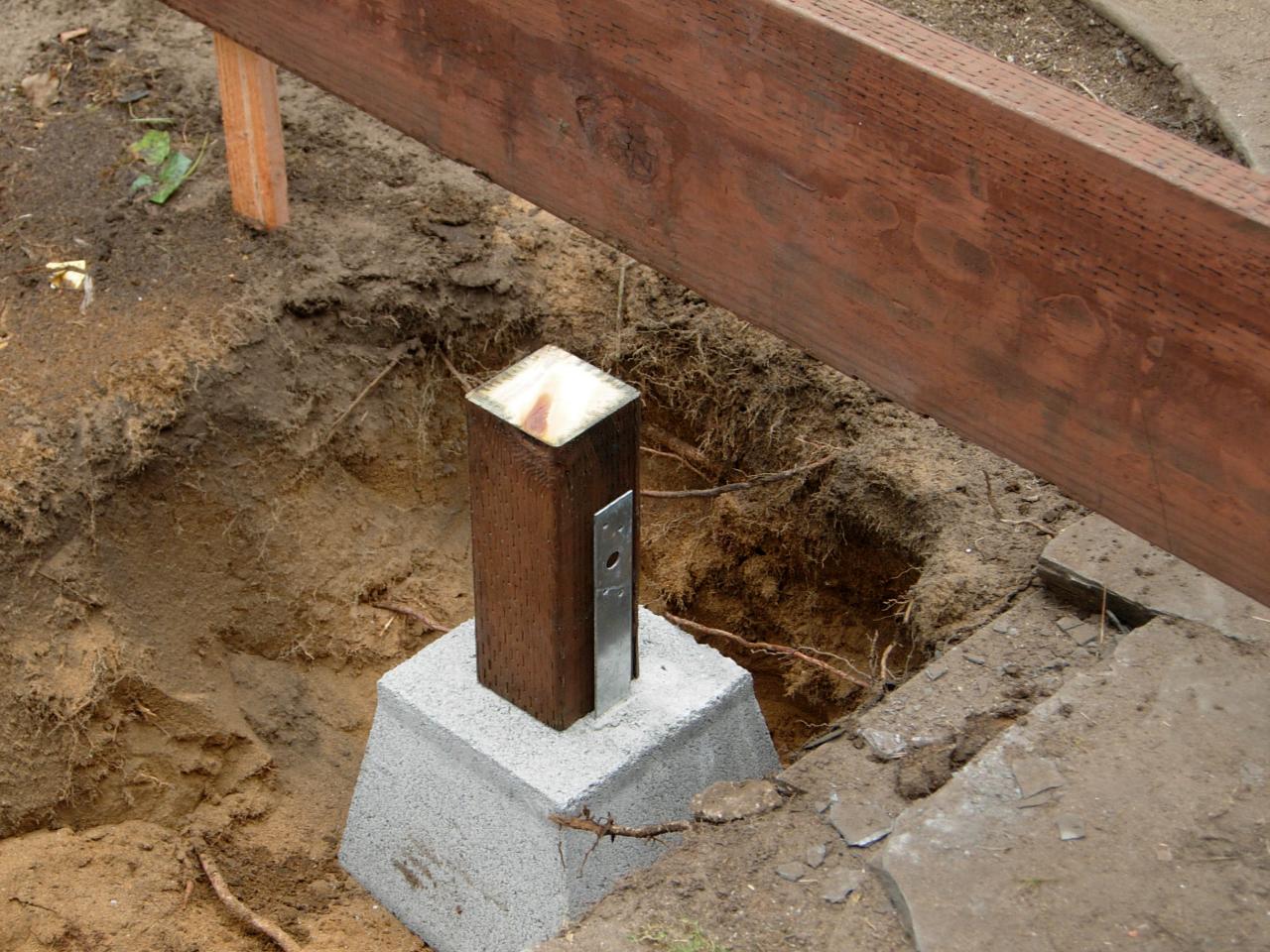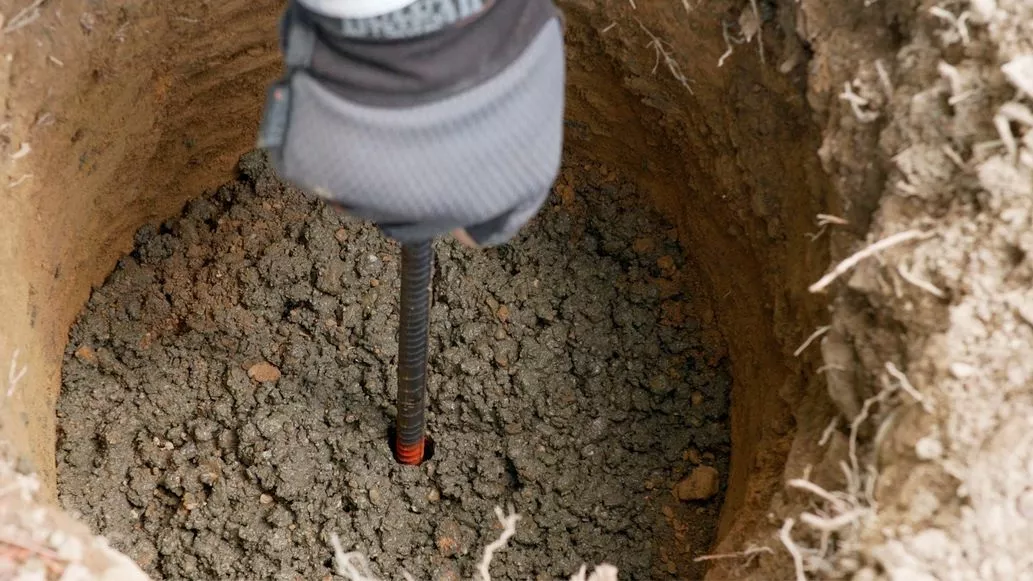Selecting the Right Deck Footings for Stability and Durability
The durability and safety and security of your deck depend heavily on the type of grounds you choose, as they give the vital assistance and stability to hold up against the examination of time. In this discussion, we will certainly discover the various types of deck grounds, take into consideration the essential aspects to consider when making a decision, and dig right into the pros and cons of different choices.
Sorts Of Deck Footings
These footings consist of a cylindrical hole filled with concrete, which offers a solid foundation for the deck posts. Concrete pier footings are relatively easy to mount and supply excellent stability, making them a preferred selection for many deck tasks.
An additional sort of footing is the helical stack footing. Helical piles are steel shafts with helical plates connected to them. These grounds are mounted by screwing them right into the ground, which produces a safe foundation for the deck. Helical pile footings are ideal for locations with tough soil conditions, as they can be mounted in virtually any kind of sort of soil. They also enable simple modification and leveling of the deck if required.
Alternatively, some builders opt for precast concrete grounds. These footings are made of sturdy concrete and be available in various sizes and shapes to fit various deck layouts. Precast concrete grounds are practical to install and supply a steady base for the deck framework.
Ultimately, an additional alternative is the post-in-anchor footing system. This kind of footing entails driving a metal support into the ground and connecting it to the deck post. It uses versatility in regards to positioning the deck articles and is suitable for decks with light-weight frameworks.
When selecting the appropriate sort of deck ground, it is vital to take into consideration aspects such as dirt conditions, deck tons, and local building regulations (Deck Footings). Consulting with a specialist contractor or architectural designer can help make sure the ideal footing is selected for a steady and secure deck
Factors to Think About When Picking Footings
When choosing the proper grounds for a deck, it is essential to meticulously consider various aspects such as dirt problems, deck lots, and adherence to local building regulations. These aspects play a substantial role in guaranteeing the stability and longevity of the deck framework.
The type of soil on which the deck will certainly be developed establishes the kind of footings required. On the various other hand, decks constructed on clay or extensive soils might call for footings that can fit the soil's tendency to increase and agreement.
One more important factor is the deck lots. The weight of the deck, consisting of the materials made use of and any kind of prospective live lots such as furniture or gatherings, have to be taken right into account when selecting grounds. The grounds should be made to birth the weight of the deck and distribute it equally to avoid any architectural problems or failures.
Finally, adherence to local building regulations is critical. Building ordinance vary from area to region, and it is important to adhere to the certain requirements established by the local authorities. Deck Footings. These codes ensure that the deck is developed safely and fulfills the required criteria for structural stability and load-bearing capacity
Concrete Footings: Disadvantages and pros

Concrete grounds supply numerous advantages and disadvantages when utilized as the structure for a deck. On the favorable side, concrete grounds offer superb security and resilience.
Another benefit of concrete grounds is their versatility. They can be poured into different shapes and sizes to fit numerous deck layouts and arrangements. Concrete grounds can be personalized to fit the certain requirements and needs of the get more deck framework.
Nevertheless, there are likewise some disadvantages to utilizing concrete grounds. One significant negative aspect is the cost and labor included check over here in their installation. Concrete footings call for excavation and usually need the assistance of heavy equipment. This can boost the general cost of the deck project and may require professional assistance.

Helical Piers Vs. Sonotubes: Which Is Much better?
In taking into consideration the structure options for a deck, the comparison between helical piers and sonotubes is critical in determining the exceptional option. Helical piers, likewise called screw stacks, are steel shafts with helical plates affixed to them. They are turned into the ground utilizing hydraulic machinery, offering a long lasting and steady foundation for the deck. On the other hand, sonotubes are cylindrical forms made of cardboard or fiber product that are full of concrete. They are positioned in an opening went into the ground and supply support for the deck.
The helical plates on the piers develop a strong grip with the dirt, moving or preventing any kind of motion of the deck. Sonotubes, on the various other hand, depend solely on the concrete loading for security, which may not use the exact same level of strength and resistance.
In regards to installation, helical piers are reasonably simpler and faster to mount compared to sonotubes. The hydraulic equipment used to turn the piers into the ground makes sure a effective and fast procedure. Sonotubes, on the various other hand, call for excavating openings and pouring anonymous concrete, which can be lengthy and labor-intensive.
Additionally, helical piers are a more flexible choice. They can be utilized in different dirt problems and can be readjusted or enhanced if needed. Sonotubes, on the various other hand, may require extra assistance, such as rebar, in particular dirt conditions or areas with high tons demands.
Picking the Right Footings for Your Deck's Measurements
For optimal structural integrity, it is crucial to thoroughly choose the proper grounds that straighten with the measurements of your deck. The measurements of your deck, including its size, elevation, and size, play a considerable function in establishing the kind and dimension of grounds needed.
When choosing grounds for your deck, it is crucial to take into consideration the load-bearing ability of the dirt. The weight of the deck, integrated with the weight of any type of furniture or people on it, exerts a significant force on the grounds (Deck Footings). For that reason, it is important to select grounds that can appropriately sustain this weight without sinking or changing gradually.
Bigger decks with greater measurements need larger grounds to offer enough security and support. The form of the footings, whether they are square or rounded, depends on the style and layout of the deck.
Final Thought
In final thought, picking the best deck grounds is critical for making certain stability and resilience. Factors such as the sort of grounds, the deck's dimensions, and the advantages and disadvantages of various choices ought to be considered. Concrete footings offer toughness and durability, but might be much more taxing and expensive to set up. Helical piers and sonotubes have their own advantages and disadvantages. Eventually, selecting the proper grounds for your deck's certain needs is necessary for a successful and resilient framework.
These grounds are composed of a cylindrical hole loaded with concrete, which provides a solid foundation for the deck messages. Concrete pier grounds are relatively easy to install and provide exceptional security, making them a popular option for lots of deck projects.
Precast concrete footings are hassle-free to install and provide a stable base for the deck structure.
It offers flexibility in terms of positioning the deck messages and is ideal for decks with light-weight frameworks.
Concrete grounds use a number of advantages and drawbacks when utilized as the foundation for a deck.